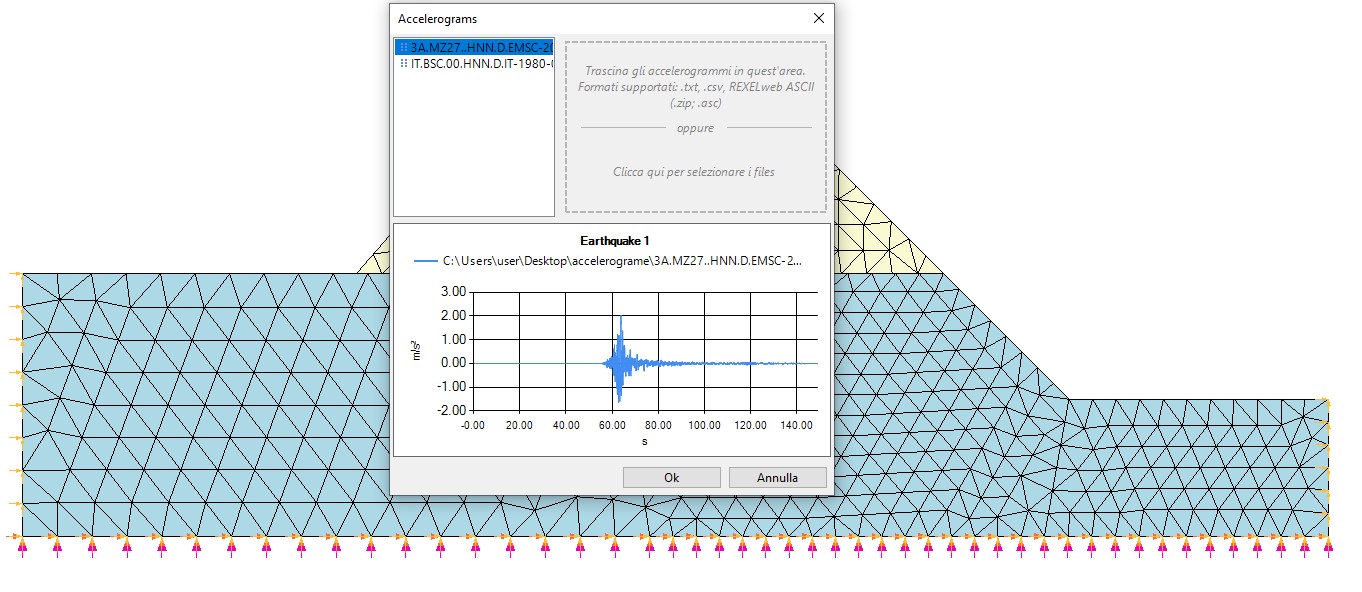RSL III 2D is a software for the evaluation of the local Level seismic response using a finite element approach, in the time domain, in terms of total stresses.
Based on the seismic input, represented by one or more accelerograms applied to the bedrock, the wave propagation motion is evaluated for any node of the discrete model using triangular finite elements.

Numerous theoretical studies and the observation of real cases have widely proven that the local seismic response is strongly influenced by the topography and stratigraphy of the site. In more recent microzonation studies, numerical methods on two-dimensional models in which the effects of real subsurface geometry are taken into account have frequently been utilised.
The evaluation of the two-dimensional local seismic response cannot be separated from an accurate reconstruction of the geotechnical model of the subsurface. The measurement of numerous parameters, including the geometry, shear wave propagation velocity and density of the soils involved, obtained through the use of appropriate geotechnical or geophysical investigations, is the first step for two-dimensional seismic microzonation studies, which constitute the input for 2D modelling.
RSL III 2D is a calculation tool for two-dimensional modelling of local seismic response using a finite element approach in the time domain. It eliminates the completely rigid bedrock assumption used in the one-dimensional model of wave propagation in a Kelvin-Voigt soil. The calculation code allows the modelling of complex geometries and boundary conditions of both the substrate and the topographic surface, as well as internal to the deposit itself (cavities, inclusions). It performs a finite element analysis (FEM) by discretizing the section using a mesh of triangular-shaped elements, according to a scheme of masses, springs and viscous dampers concentrated at the nodes, solving in the time domain the equations of motion written for each node.
The seismic input, represented by one or more accelerograms (REXEL allows the search for combinations of natural accelerograms compatible with regulatory spectrum), is applied to the bedrock, for which linear elastic behaviour is assumed. Then, the response of the system at time t is evaluated as a function of the response at time t -Δt by means of a sequence of equivalent linear analyses in which the stiffness and damping parameters are updated following an iterative procedure and according to a predefined convergence criterion.
The final values provided by the Level III 2D analysis are the accelerograms and their response spectra, the medium and normalised medium spectra, to be compared with the normative spectrum, and various amplification factors for different period intervals.
RSL III 2D has a particularly intuitive user interface, which allows:
•the import of spectrum-compatible accelerograms;
•the import of the two-dimensional geometric model from DXF;
•the automatic generation of the mesh for the discretization of the geotechnical model taking into account the interfaces or holes in the assigned geometry;
•the determination of the seismic response in terms of accelerograms and acceleration response spectra for each model node;
•the exportation of the spectra in .txt or .csv format in order to allow their importation into the software Buildings in reinforced concrete and/or any structural software;
•the normalisation of the spectra according to the NTC and EUROCODES;
•the determination of the seismic parameters and quantities necessary to carry out a complete characterisation of the seismic motion on the surface (PGA, PGV, amplification factors over different periods, Housner intensity).
©GeoStru